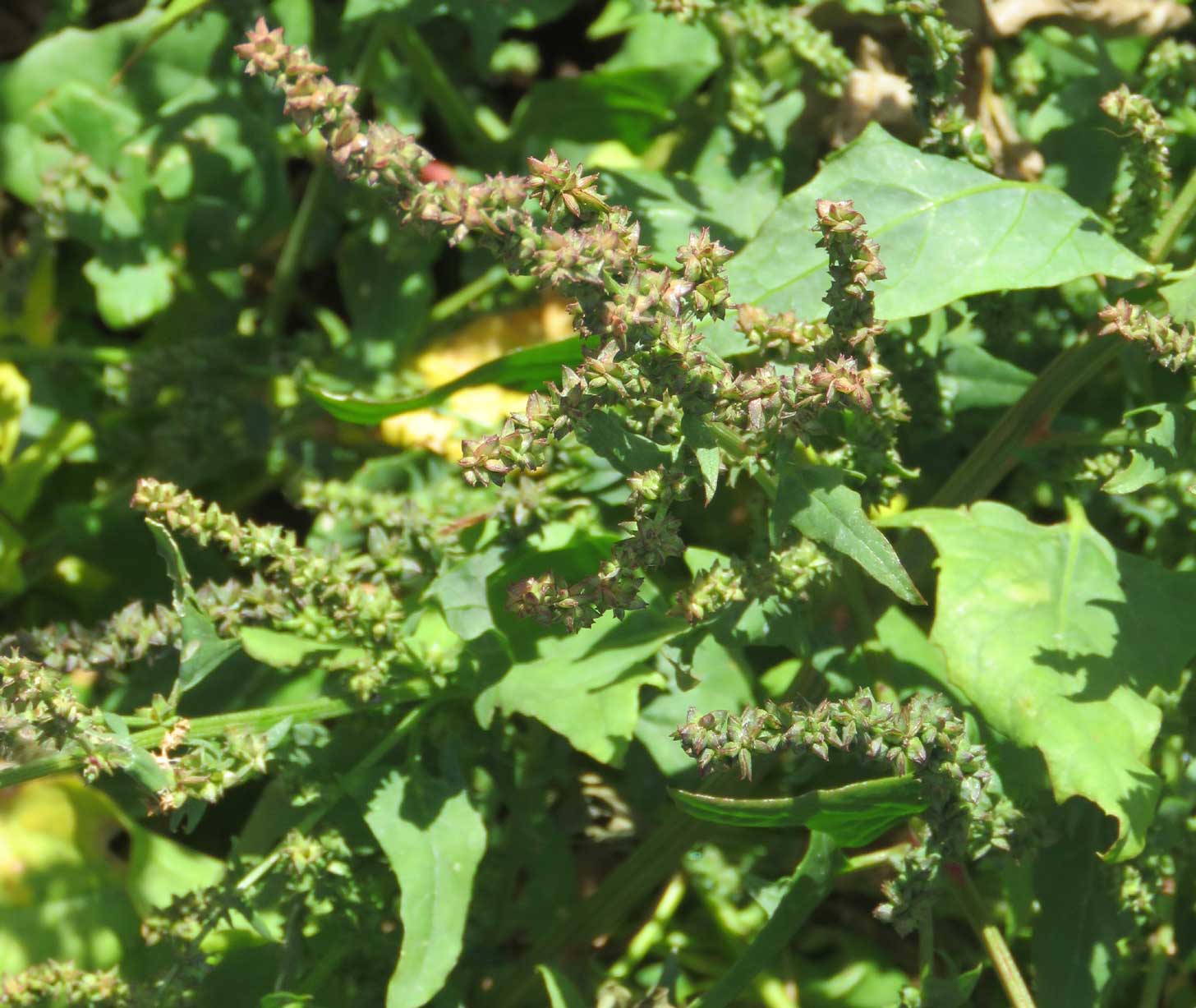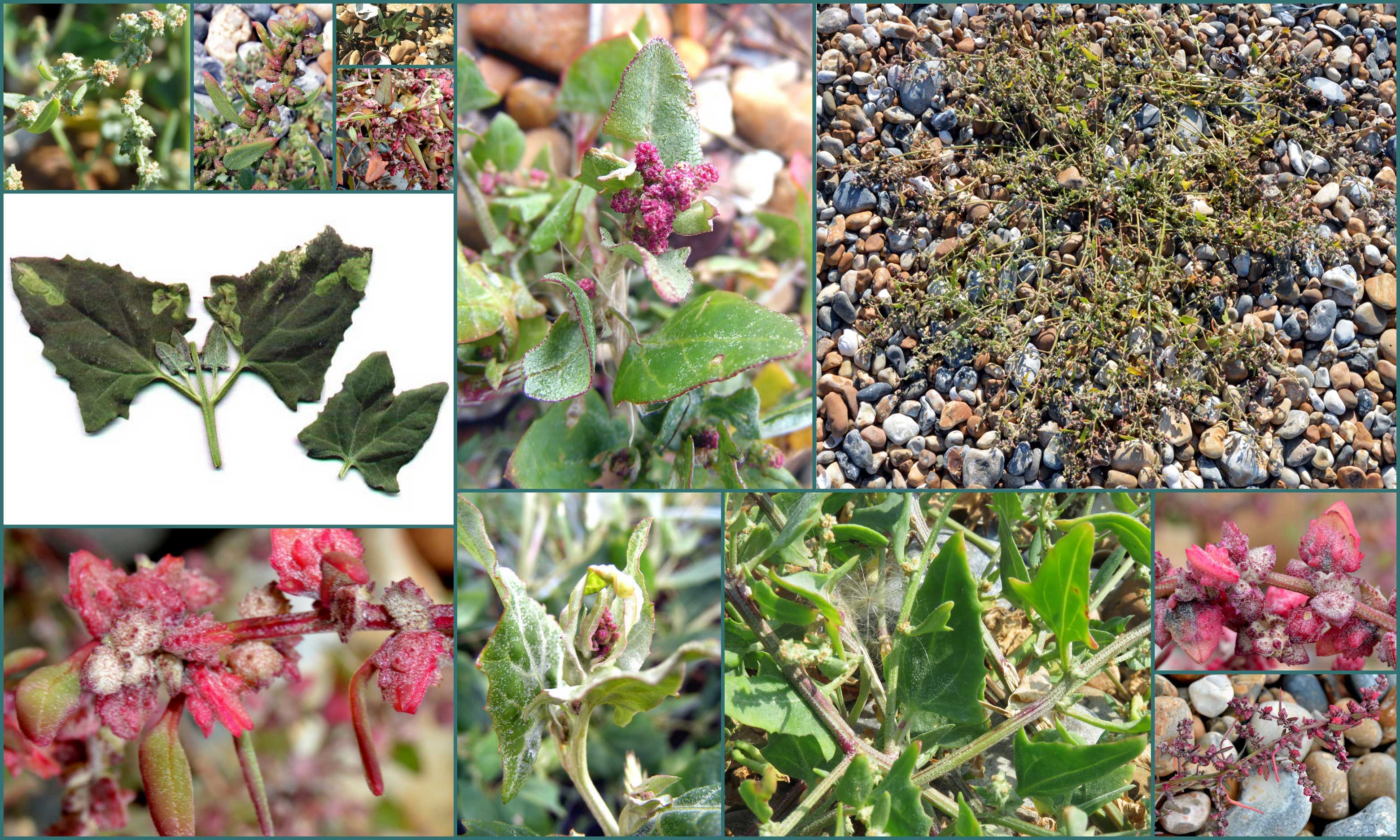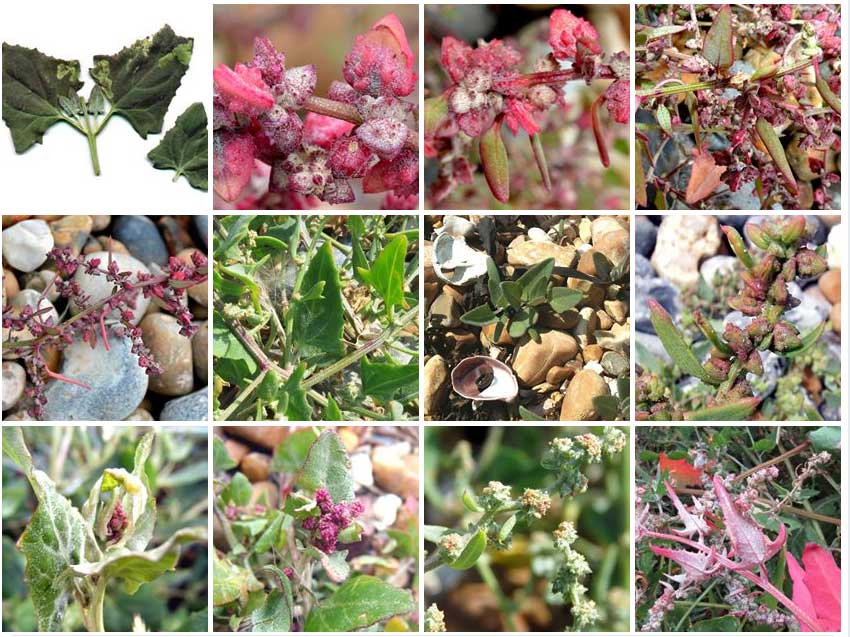Atriplex
littoralis GRASS LEAVED ORACHE
Atriplex
glabriuscula BABINGTON'S ORACHE
Atriplex
prostrata SPEAR-LEAVED ORACHE Atriplex hastata
Atriplex
patula COMMON ORACHE
Similar:
Halimione
portulacoides SEA PURSLANE
Chenopodium
album FAT-HEN
Chenopodium
bonus -henricus GOOD-KING-HENRY
Chenopodium
ficifolium FIG-LEAVED GOOSEFOOT
Chenopodium
murale NETTLE-LEAVED GOOSEFOOT
Chenopodium
polyspermum MANY-SEEDED GOOSEFOOT
Chenopodium
rubrum RED GOOSEFOOT
NOT
RECORDED IN SHOREHAM
Atriplex
laciniata Frosted Orache
Atriplex
sagittata Purple Orache
Atriplex
longipes Long-stalked Orache
Atriplex
Crib
On
the beaches of Shoreham and Lancing there is the prostrate form on the
shingle which is frequent and turn reddish in autumn but this may be only
the leaves furthest from the central rosette.

Babington’s
Orache

Southwick
Beach

Orache
growing in the Widewater saltmarsh are larger and a few tend to be redder.
However, there are also extensive green plants.


Some
Orache growing on the shingle is much more extensive. These could be all
light green. But less extensive plants can turn very red.


Orache
is also found in Shoreham town. This seems to be a darker green, more extensive
and I have penned these as Atriplex
patula COMMON ORACHE. On reflection this could be FAT
HEN Chenopodium
album,
Notes:
Common
Orache is a slightly mealy annual plant found on open, arable,
coastal and disturbed, waste ground over most of the country. Extremely
variable, it grows to about 60 cm in height although it can also be quite
prostrate and spreading. The stems are ridged, reddish and, both terminally
and from the leaf axils, bear small, greenish flowers in long spikes from
July to October. The upper leaves are lanceolate, the lower, triangular
leaves having basal lobes which are forward-pointing, the leaves themselves
tapering into the stalk. The diamond –shaped fruits lack knobbles or warts,
which helps to distinguish it from Babington’s Orache. This is an introduced
species belonging to the Chenopodiaceae family.















